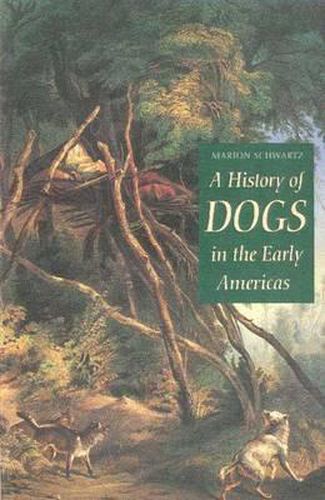Readings Newsletter
Become a Readings Member to make your shopping experience even easier.
Sign in or sign up for free!
You’re not far away from qualifying for FREE standard shipping within Australia
You’ve qualified for FREE standard shipping within Australia
The cart is loading…






For more than 12,000 years the dog has coexisted with humans in the Americas, following pathways much different from those of dogs in Europe and Asia. New World dogs have been viewed as sacred and profane, as deities, as eaters of excrement, and as valued food. This entertaining and enlightening book examines the fluctuating status of dogs in Native America from prehistory to the present.
Drawing on chronicles, ethnographies, archaeological reports, myths, biology, and a rich array of visual materials, Marion Schwartz investigates views about dogs in a wide range of native societies in North and South America. She discusses the early domestication of the dog and looks at how hunting and gathering peoples relied on dogs to help with the hunt and to transport food and goods. She provides details about the eating of dogs for ritual purposes or as a dietary staple. She describes how dogs were associated with the afterlife, where they functioned as guides or guards, and how dogs were buried in tombs or were sacrificed to the gods in many cultures. She examines pre-Columbian art to see how the dog was portrayed and the various meanings attributed to it. The book concludes with a description of the fierce war dogs brought by the Spanish to wreak havoc among the Indians-dogs unlike any the New World had ever seen-and how traditional societies reinvented their relationship with dogs after the arrival of the Europeans.
$9.00 standard shipping within Australia
FREE standard shipping within Australia for orders over $100.00
Express & International shipping calculated at checkout
For more than 12,000 years the dog has coexisted with humans in the Americas, following pathways much different from those of dogs in Europe and Asia. New World dogs have been viewed as sacred and profane, as deities, as eaters of excrement, and as valued food. This entertaining and enlightening book examines the fluctuating status of dogs in Native America from prehistory to the present.
Drawing on chronicles, ethnographies, archaeological reports, myths, biology, and a rich array of visual materials, Marion Schwartz investigates views about dogs in a wide range of native societies in North and South America. She discusses the early domestication of the dog and looks at how hunting and gathering peoples relied on dogs to help with the hunt and to transport food and goods. She provides details about the eating of dogs for ritual purposes or as a dietary staple. She describes how dogs were associated with the afterlife, where they functioned as guides or guards, and how dogs were buried in tombs or were sacrificed to the gods in many cultures. She examines pre-Columbian art to see how the dog was portrayed and the various meanings attributed to it. The book concludes with a description of the fierce war dogs brought by the Spanish to wreak havoc among the Indians-dogs unlike any the New World had ever seen-and how traditional societies reinvented their relationship with dogs after the arrival of the Europeans.